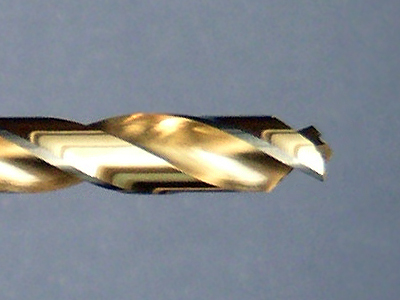We have known about superconductors for about a hundred years. Superconductors are materials in which, if you cool them down far enough, their electrons form quantum objects called Cooper pairs, and the substance suddenly looses all its electrical resistance. This means it can carry large currents with no energy losses. Superconductors are often used in MRI scanners in hospitals and in the new LHC in CERN.
Christoph Strunk of Regensburg University in Germany and associates have found a theoretically very similar state of matter, a 'superinsulator'. Normal insulators are very good at stopping current flow, but a very small amount will always flow through them. In the same way that a superconductor cannot have a voltage difference across it because it has no resistance, a superinsulator cannot have any current flowing through it.
 |
| Titanium Nitride is also used to harden drill bits © Peter Robert Binter |
They built their superinsulator by cooling a very thin film of titanium nitride down to below 70 thousandths of a degree above absolute zero. The film was made up of lots of grains so that the superconductor is split into lots of puddles of superconductivity surrounded by narrow gaps. At higher temperatures the Cooper pairs can jump between the puddles, carrying current. However, if you cool the titanium nitride below a critical temperature this can't happen - the Cooper pairs are stuck and no current can flow.
In theory these could be used to form a perfect battery which would never discharge no matter how long you left it, (normal rechargeable batteries lose about 1% of their charge each day, even if you don't use them) but the practicalities of keeping it cold would probably stop it from being useful most of the time. For the moment it is mostly a fascinating new state of matter, and who knows what interesting things may come of it.
- Previous How plants avoid the shade
- Next Bad memories lost to the ether










Comments
Add a comment